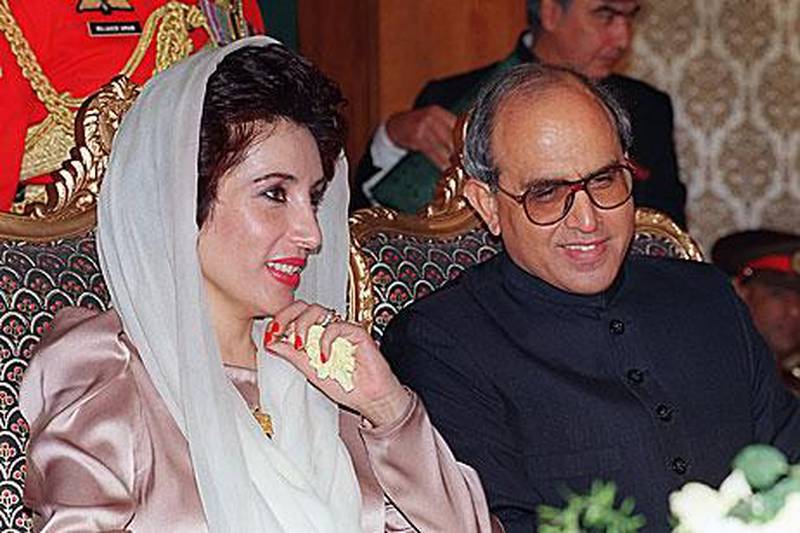This series will cover the history of Modern Pakistan, from the earliest notions of a separatist Muslim governance to the creation of Pakistan and all the way to 2023.
You can read post covering 1857 – 1927 here: A History of Modern Pakistan #1 1857 – 1927
You can read post covering 1927- 1939 here: A History of Modern Pakistan #2 1927 – 1939
You can read post covering 1939 – 1947 here: A History of Modern Pakistan #3 1939 – 1947
You can read post covering 1947 – 1953 here: A History of Modern Pakistan #4 1947 – 1953
You can read post covering 1953 – 1958 here: A History of Modern Pakistan #5 1953 – 1958
You can read post covering 1958 – 1970 here: A History of Modern Pakistan #6 1958 – 1970
You can read post covering 1970 – 1977 here: A History of Modern Pakistan #7 1970 – 19770
You can read post covering 1977 – 1988 here: A History of Modern Pakistan #8 1977 – 1988
1988 General Elections
General elections were held to elect the members of the National Assembly and Senate. Two major parties led the battle for power, the PPP (left wing) led by the daughter of Bhutto, Benazir and a nine-party pro-Zia alliance called the Islami Jamhoori Ittehad (IJI) (right wing), led by Nawaz Sharif and Ghulam Mustafe Jatoi.
There was no majority winner, but the PPP won the most seats, 94 of the 207, they created a coalition with other left-wing parties and formed a government. IJI had won 56 seats. Benazir became the first female Prime Minister of Pakistan.
Nawaz Sharif became the Chief Minister of Punjab as IJI won the Provincial election. Although IJI were not running the government, they did have power of Punjab, the province where 60% population of Pakistan lived.
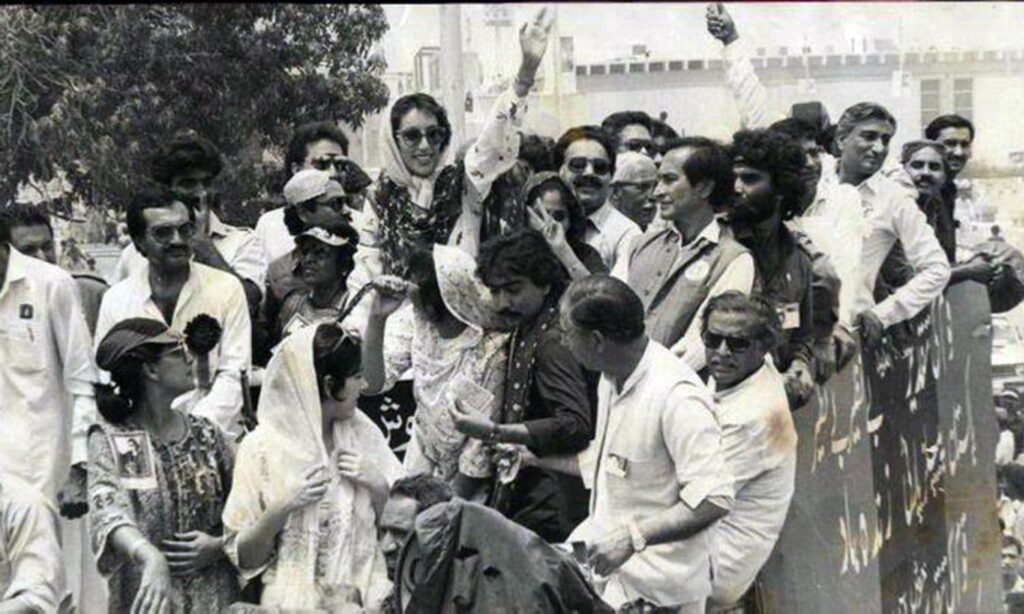
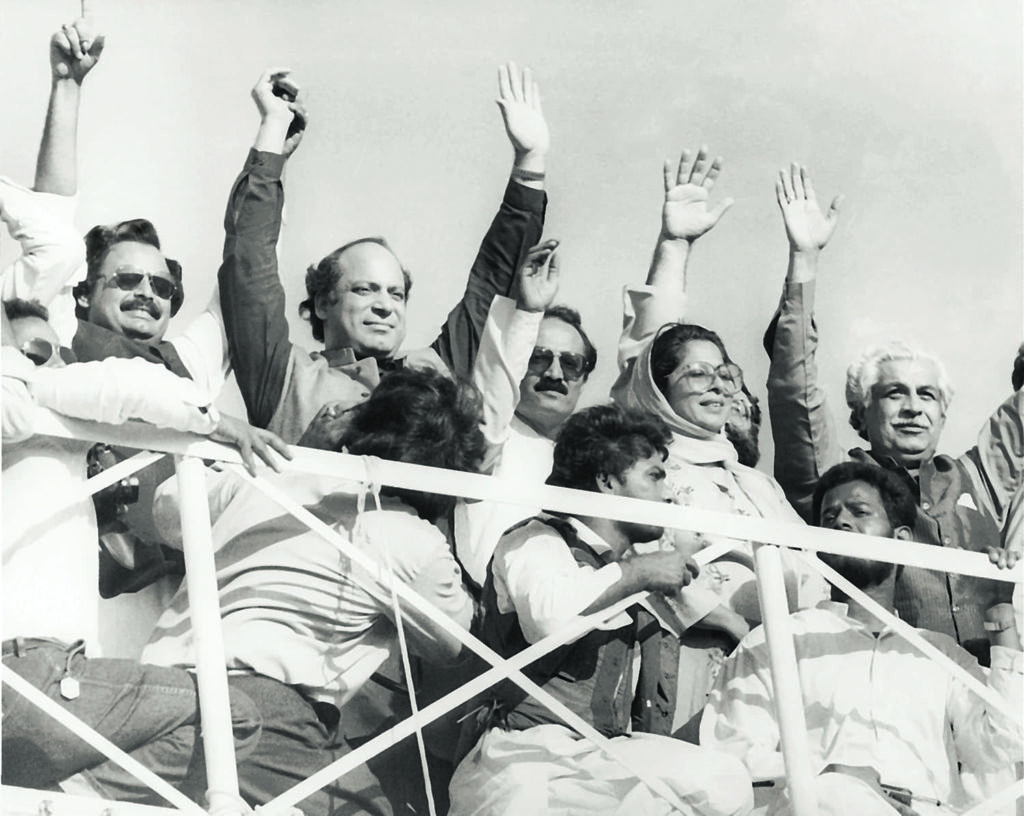
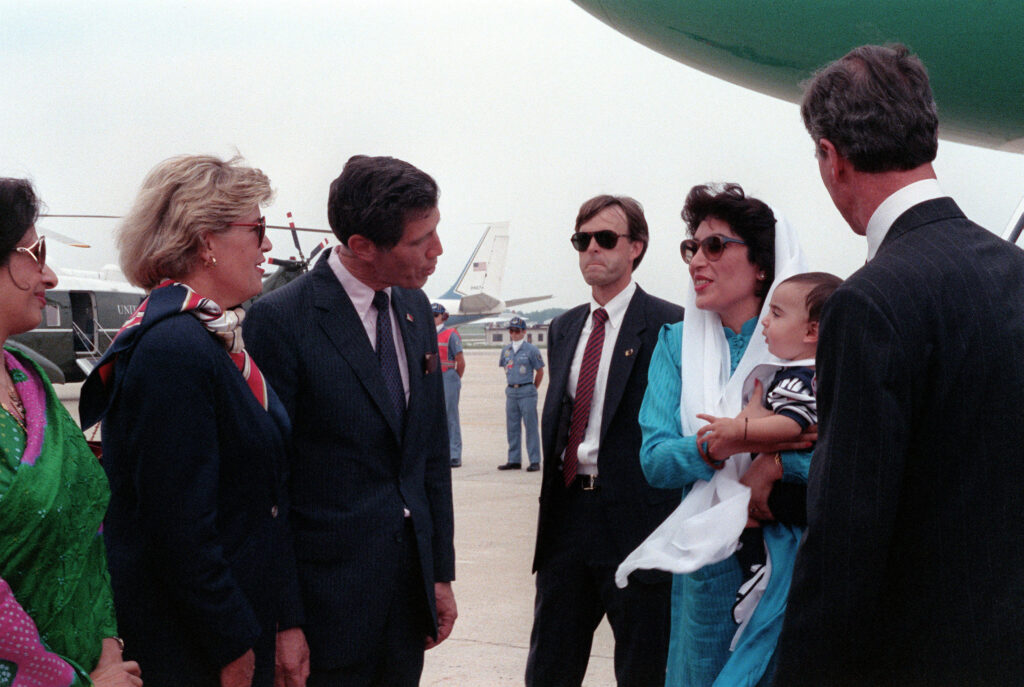
Ghulam Ishaq Khan as President
Presidential elections were also held in 1988, in which Ghulam Ishaq Khan (GIK) won, becoming the oldest President of Pakistan. He was marred with political struggle with Prime Minister Benazir Bhutto who attempted for pushing the bill to reverse the Eighth Amendment to the Constitution of Pakistan. He also wanted control over the nuclear programme, which Benazir was keen to continue.
GIK was also involved in the Pressler Amendment, which banned most US economic and military assistance to Pakistan unless the president certified on an annual basis that “Pakistan does not possess a nuclear explosive device and that the proposed United States assistance program will reduce significantly the risk that Pakistan will possess a nuclear explosive device.” GIK refused to acknowledge this amendment as nuclear was important for Pakistan to possess due to its relations with India.
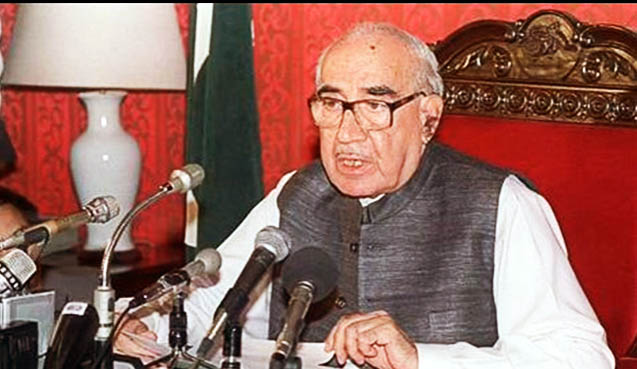
Bhutto as Prime Minister
Bhutto as Prime Minister iterated her mission to alleviate the Pakistani people from poverty. She used her image as the first Muslim female prime minister to cultivate good relations, attract investment and aid. She travelled to many countries from the West, the Middle East, and Far East. She even attempted to normalise relations with India but continued to take hardline with the Kashmir issue.
She also lifted the ban on media censorship, trade unions, NGO’s, and student associations. This was part of restoring democracy in Pakistan. She also worked on dismantling the National Press Trust, which was a conglomerate of over 15 newspapers.
When Bhutto took office, the Pakistani government was bankrupt, with Zia having borrowed at high-interest rates. This meant the promises Bhutto had made could not be fulfilled. This was a blow as she had claimed a million new homes would be built each year and universal free education and healthcare would be introduced. Soaring unemployment also continued to increase.
Closer to home, Bhutto felt excluded from serious decisions on defence. The president, military and ISI were in control of the nuclear programme and kept her excluded from it. She was being treated as a poster girl. On her trip to the United States, she told Congress that “we do not possess, nor do we intend to make, a nuclear device.”, but was then shown mock images of the nuclear weapon in development. She was shocked at how far Pakistan had come and that she knew nothing of it. Bhutto demanded to be included in the developments but kept quiet to appease the USA.
After the end of the Soviet war, Pakistan became involved in the drugs trade, with millions of $ worth of heroin being exported through its borders. This led to a domestic issue of heroin uptake.
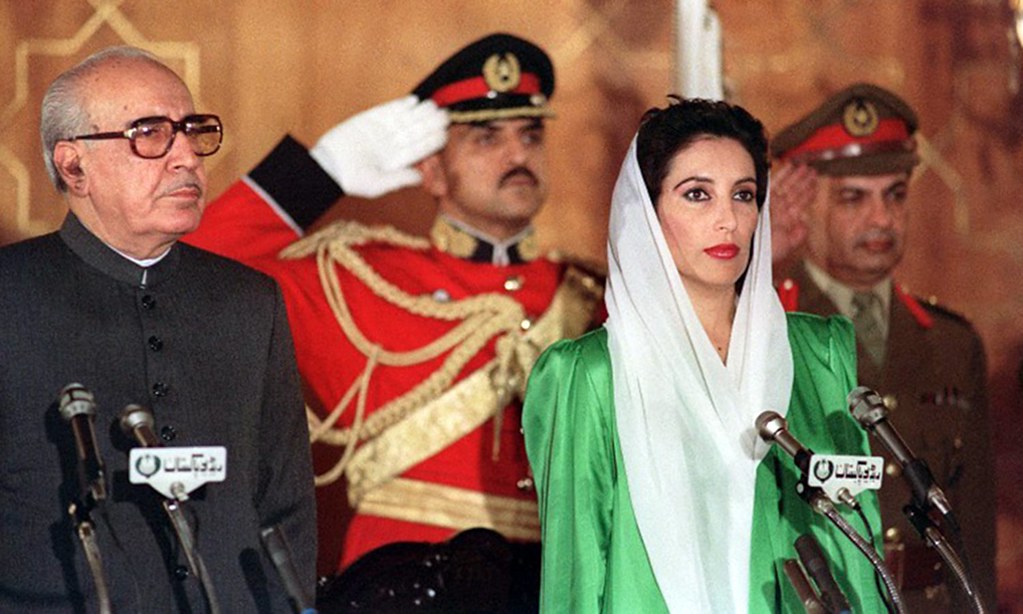
Pak Afghan War Jalalabad 1989
In April 1989, ISI lead, Gul led an invasion of Afghanistan with the purpose of seizing Jalalabad, but he failed in this. He blamed the Bhutto government for leaking details of the mission to the Afghans. This had an unnecessary impact of the Pakistani state, although Bhutto couldn’t remove Gul from power, she replaced him with another army chief.
As the alliance with the US came to an end, Pakistan’s atomic bomb project was revealed to the world, leading to economic sanctions by the US.
Dismissal
In April 1989, the opposition parties organised a no-confidence vote of Bhutto’s leadership, but they lost by 12 votes. Bhutto claimed many of those who voted in favour were bribed. However, as the economic situation worsened when the state lost a currency war with India and the country was hit with no aid and investment sanctions, the country entered a period of stagflation, and her government was dismissed by the GIK. He cited corruption and misuse of power and called for fresh elections in 1990.
1990 General Elections
During the 1990 elections, Both Nawaz Sharif and Bhutto were head-to-head to get elected, with Bhutto leading in the polls. Bhutto was extremely popular with the people. However, the IJI won, and Nawaz Sharif became Prime Minister. Bhutto claimed the elections were rigged but remained as opposition leader. In 2012, the Supreme Court ruled the elections were indeed rigged.
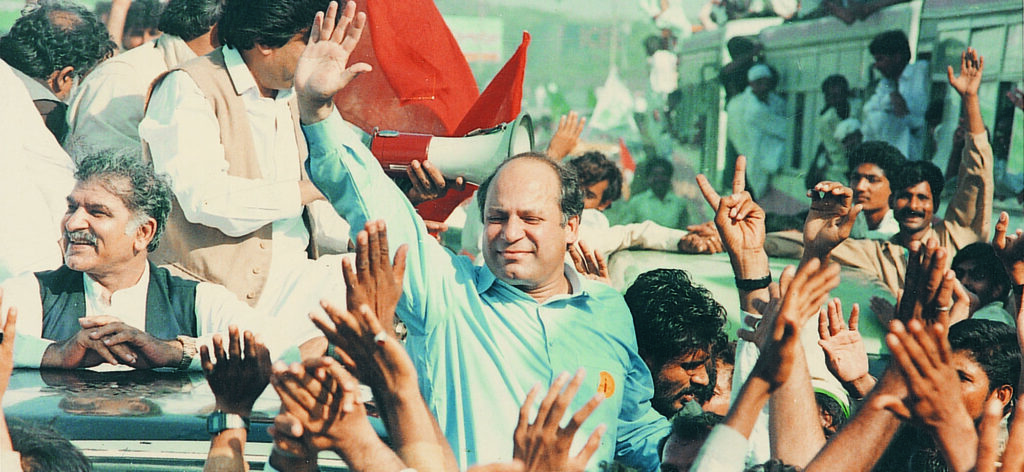
Nawaz Sharif as Prime Minister
As a Businessman, Sharif emphasised on developing an economy based on capitalism. Companies need to be private, there needed to be competition and more economic liberalisation. It’s no good heavy regulating and taxing companies in a developing nation. For a while this was a success as the economy grew, it led to wealthy oligarchs and a wider gap between the rich and poor.
As a pro-Zia politician, Sharif introduced a council to introduce Shariah law in Pakistan and a Bayt ul-Maal to support the poor, orphans, and widows.
Although the IJI focused repairing Pakistan dissatisfaction grew for them as Punjab prospered and Sindh stagnated. Sharif was a Punjabi and Bhutto was a Sindhi. So there was a clear divide between where investment went.
In November 1992, Bhutto organised a 10-mile march from Rawalpindi to Islamabad in protest. Sharif ordered her to be placed under house arrest to prevent her instigating any uprisings.
Resignations
Another thing Sharif tried to overturn was the eighth amendment as he knew it was always hanging over his head. GIK wasn’t going to allow such request to go ahead. He would lose vital power against the acting government, and by extension so would the military. GIK removed Sharif from power. Sharif retaliated with a lawsuit and the Supreme Court of Pakistan ruled in his favour, the use of the eighth amendment was illegal, and Sharif was reinstated as the Prime Minister.
The turmoil in governance between the Prime Minister and President led them both to resign after joint intervention by the judiciary and the military. The military formed an interim government and called for a general election to held in October 1993.
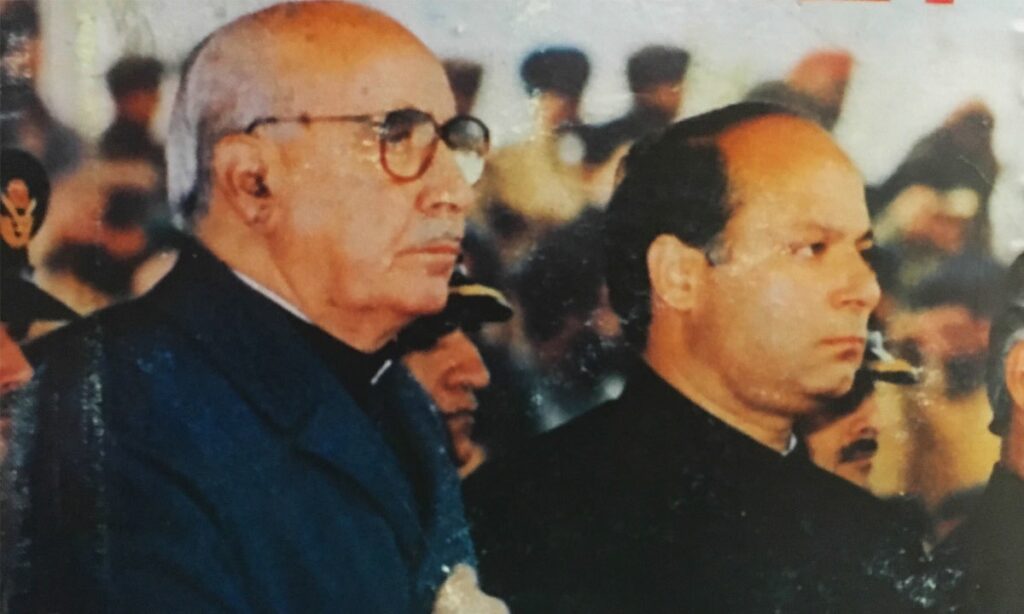
1993 General Elections
Both Bhutto and Sharif were head-to-head once again. Their policies this time were very similar, but a clash of personalities occurred, with both parties making many promises but not evidence of financing them. Bhutto further had it harder being a woman as there was a constant threat to remove her. During election campaigns, there were at least two attempts on her life.
Both Parties achieved different results compared to previous elections, but Bhutto had won. She was once again Prime Minister. Bhutto nominated a PPP member, Farooq Leghari for Presidency, someone who would be loyal to her and not remove her from power due to disagreements.
During this period, Bhutto’s husband Asif Ali Zardari was arrested for extortion. He had attached a remote-control bomb to the leg of a businessman and forced him to enter a bank and withdraw money. He was convicted and imprisoned for three years.
Farooq Leghari as President
Farooq was the Eight president of Pakistan. Whilst Bhutto was opposition leader between 1990-93, he was her deputy. He was determined to embrace the role of Presidency and make sure democracy and law was upheld.
Overtime he and Bhutto started to drift apart. He began noticing traces of corruption in the Bhutto government especially amongst her loyalist as well as the dubious appointment of Zardari as Investment Minister, chief of the Intelligence Bureau, director-general of the Federal Investigation Agency, and chair of the new Environment Protection Council as well as her mother as Cabinet minister.
